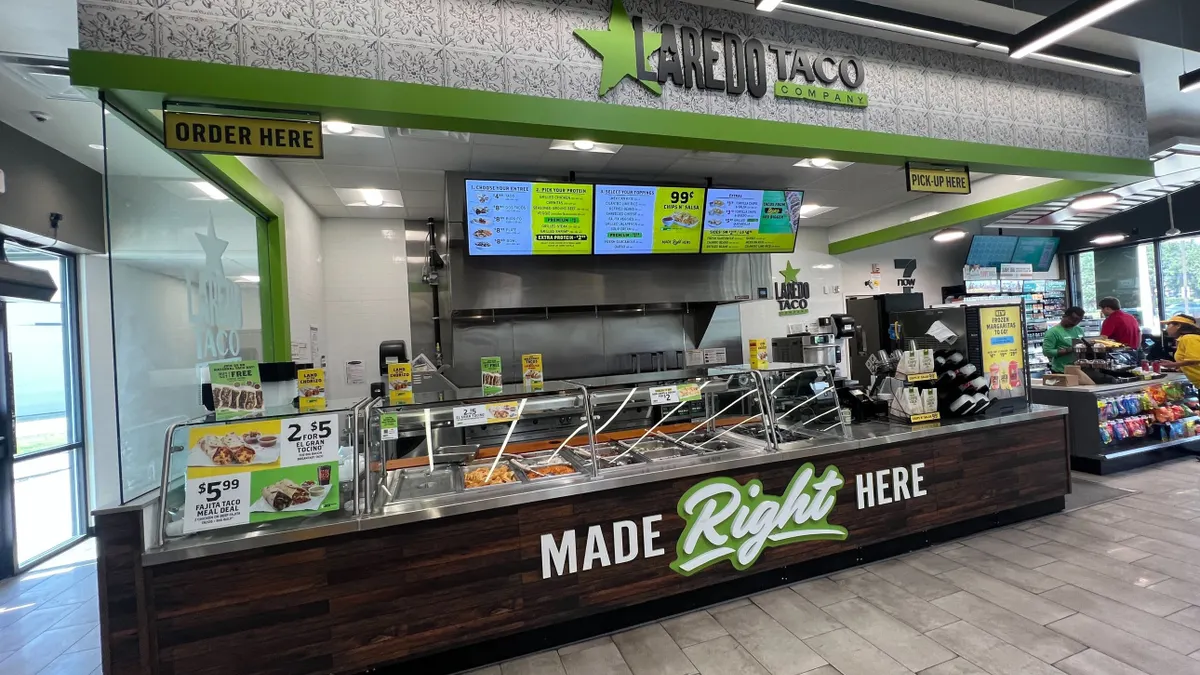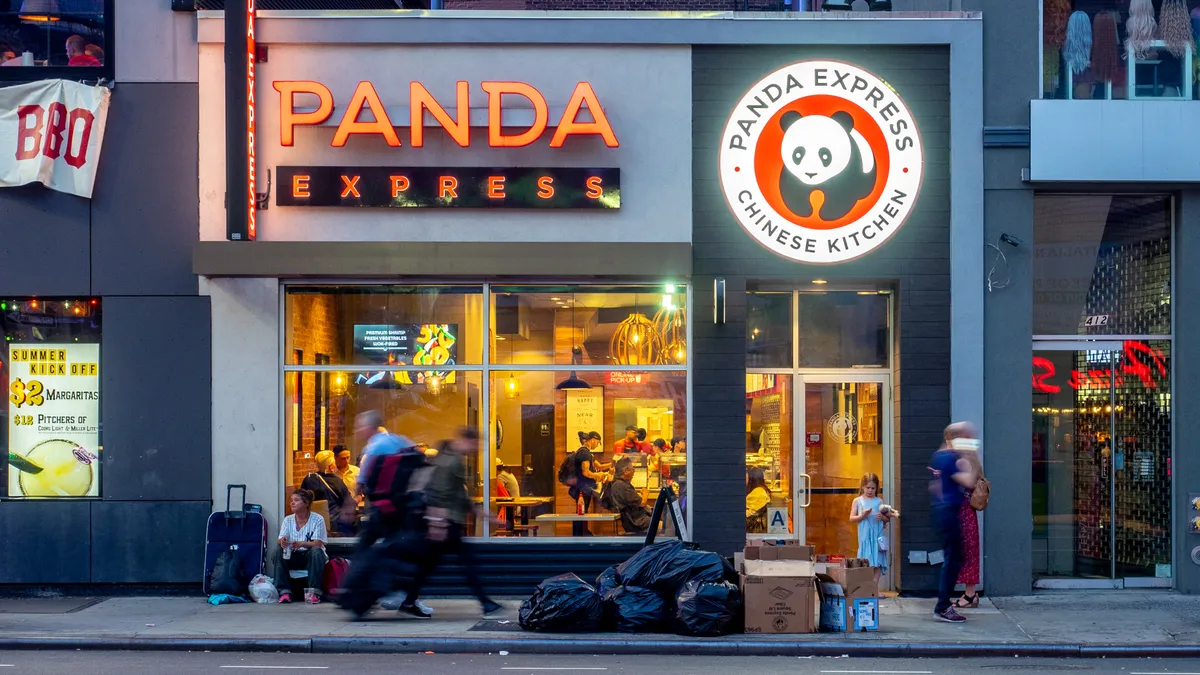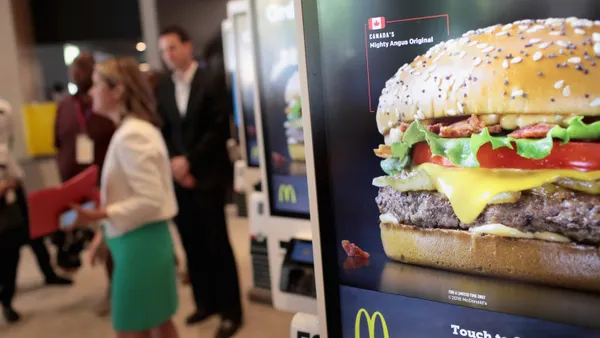Restaurants and foodservice businesses added 61,000 jobs in March 2022, marking the 15th consecutive month of job growth in the sector, according to the Bureau of Labor Statistics. But sectoral employment lags about 819,000 jobs behind February 2020, the closest the sector has come to closing the gap between pre-pandemic employment and current job levels.
Elise Gould, a labor economist at the Economic Policy Institute, said it's likely hiring will continue to outpace turnover. In February, foodservice establishments hired about 1 million workers, while almost 800,000 workers quit their jobs.
"Employers are finding workers in that sector to hire, so employment is increasing, and wage growth is still going up. Taken together, those are two positive signs for workers in that sector," Gould said.
"But it does appear… likely within foodservices that wages are beating out inflation, so workers are seeing some real wage growth," Gould said.
Despite the increased pay, Zhong Yuan Xu, co-founder and CEO of restaurant technology company Deliverect, highlighted the challenges in closing the gap between pre-pandemic and current employment levels. In the broader hospitality sector, which includes restaurants, there are 1 million fewer workers today than in 2019.
"We need to find that 1 million workers," Xu said. "So it means every month, for the next 12 months, we need to add the same amount of people [as this month] to the leisure restaurant market to just get that same point. That's a lot of schooling, a lot of convincing people with their current job to switch to restaurants."
Anthony Advincula, the director of communications at Restaurant Opportunities Centers United, said workers today face the same issues in restaurants they have throughout the pandemic: low pay, limited hours, unsafe conditions and lack of opportunities for advancement. Restaurants that solve those questions, Advincula noted, are more likely to retain and attract workers.
The ROC, which offers training for workers to help them increase their skills, also helps workers advocate for themselves. According to Advincula, training and skills building can make restaurant jobs more attractive for employees and improve retention by providing workers with career development opportunities.
Advincula said low compensation can dissuade employees from working in restaurants. Wage theft, an endemic issue in low-wage work environments, is especially harmful to retention at an industry level, he said. ROC has been instrumental in winning several recent wage theft settlements, which Advincula argues could put pressure on companies to improve compensation and follow labor laws.
Compensation, especially wages, has increased in the foodservice sector. Wages for production and nonsupervisory employees in foodservice grew from $13.96 an hour in January 2021 to $16.42 in March 2022, a nominal increase of 17%. That growth moderated over the winter, however, with wages falling from December 2021 to January 2022, and inflationary pressures have weakened real wage gains.
Wage growth in foodservice did not meaningfully contribute to menu price inflation, which has been lower than pay increases in the industry, Gould said. Gould attributed inflation in the price of goods to supply chain bottlenecks and disruptions, including the Russian invasion of Ukraine.
"When you look at the sectors where you have faster price [increases], those are not the same sectors where you're seeing faster wage growth," Gould said. It’s also possible, Gould argued, that some growth is coming from tips due to increased in-person dining, rather than employers raising wages.
Still, Xu said, labor and food costs have put pressure on restaurant margins, highlighting the need for labor efficiency. Deliverect offers restaurants a way to save labor by integrating digital ordering with point-of-sale systems, Xu said, claiming such an integration could save hours of labor for restaurants.
Bill Bellissimo, president at restaurant technology company CrunchTime Information Systems, said labor-saving technology is vital in an increasingly digital environment. Inventory, scheduling and other managerial tasks are easier areas to save on labor than in customer-facing parts of the restaurant, Bellissimo told Restaurant Dive in a February interview.
"Doing a vendor order, or creating a sales forecast, or creating a labor schedule, there's a lot of data and crunching in that. Humans can influence that, but computers are really really good at that," Bellissimo said. By freeing up labor usually spent doing data-heavy tasks, restaurants can make jobs less stressful for workers while simultaneously improving productivity, according to Bellissimo. This could make restaurant work more attractive to prospective employees.
Advincula said restaurant workers want to come back, but need to feel like they are able to make a living in the industry. He said in his experience at ROC, smaller or independent restaurants have been more accommodating to employee needs and desires than major chains.
"Certainly, by the end of this year, at this kind of pace, we're going to be back to a full recovery. So the economy will look a lot like it did, pre-pandemic, with all the inequalities that were baked in," Gould said.




















